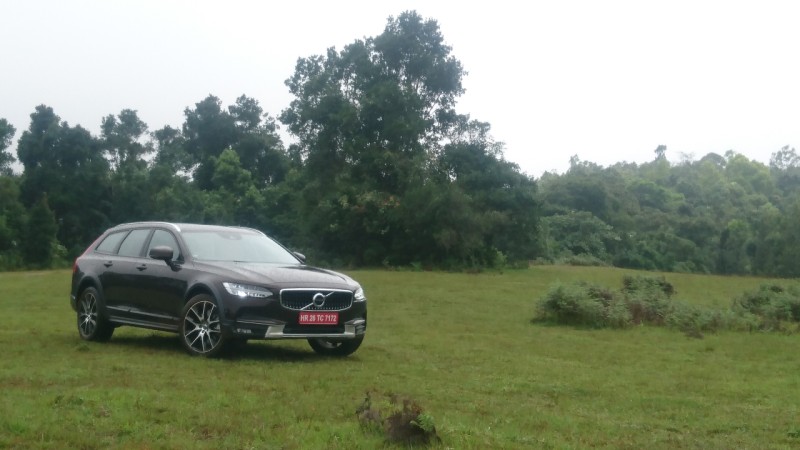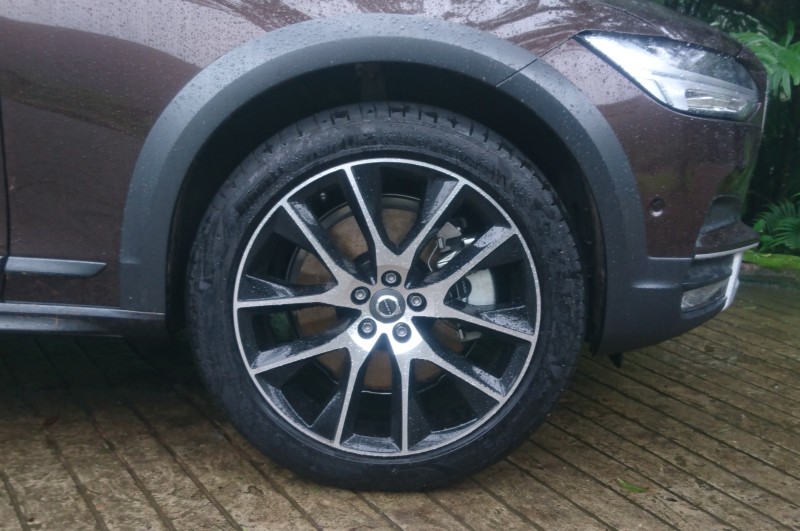Volvo Auto India will soon introduce the all-new V90 Cross Country D5 AWD in India, and we’ve driven it; in India this time.
Story & Photography: Jim Gorde
Estates have come and gone, but none of them really made a lasting impression. Some were great cars but, sadly, social perception played a big role and sedans continued to be the preferred family cars. The estate car returned just a couple of years ago, in a completely unexpected form, too: packing 560 PS and four-wheel-drive and sporting a price-tag of around Rs 1.4 crore. The second one arrived more recently, a cousin of the first, and sporting an equally potent 4.0-litre twin-turbo V8 and a 42 per cent higher price-tag. Now, though, Volvo have brought in not their estate, but the fruit of their roots. This, folks, is not the new V90 but the V90 Cross Country.
The V90 Cross Country (Volvo call it V90 CC internally, however, personally, I disagree seeing as they had a V70 XC that turned into my personal favourite Volvo, the XC70, soon after; XC standing for ‘cross country’) is S90 meets V90 meets XC90, creating a cocktail of the choicest flavours from each model line. It blends the fine characteristics of sedan-like comfort, handling, and ride quality with estate-like boot-space and flexible cargo choices together with SUV-ish ride-height and capability. It has arrived in India in just one trim level with one driveline option for now. It packs everything from perforated leather seats with massage functions and heating/cooling and multiple adjustment possibilities to a 210-mm ground clearance (just eight mm less than the old XC90) with hill-descent control, an Off-road mode, air-suspension, and, of course, those brilliant active bending LED headlamps complete with crowd-stopping Thor’s Hammer signatures.
This also marks a big shift for Volvo’s new-age traditional safety features in India. With the radio-frequency operating on the 77-GHz spectrum, after the government freed up the 76-77 GHz zone, the V90 packs the ACC (Adaptive Cruise Control) which works from pretty much a crawl to 200 km/h, together with the whole host of IntelliSafe features: distance alert, collision warning, and auto brake, besides road sign recognition, lane departure warning, and a truly intrusive steering assist to make sure you stay within your lane – the latter half of the paragraph applicable to roads with civilised lane markings and road signs.
The V90 Cross Country builds on the S90 sedan, sharing several parts being based on the same SPA (Scalable Product Architecture) platform. The Cross Country lineage gets a familiar 23-slat concave grille, but with five chromed studs on each slat setting the model apart. The long bonnet and clean lines are now joined by an extended roof-line, roof-rails, and side body cladding in contrast grey, accentuating its all-road capabilities, as well as its huge wheel arches and clearance. The V90 Cross Country runs absolutely stunning-looking 20-inch alloy wheels wrapped in 245/45 R20 Pirelli P-Zero rubber. Erm, yes, that bit. The V90 XC is meant to be capable on the road and off it. The P-Zero rubber isn’t the hardcore sports-car variety but is specifically made for the Volvo V90 XC – P-Zero VOL on the sidewall – with a more rounded profile, and is made using a softer compound.
While we first drove the V90 Cross Country in Sweden, on ice and snowy roads, with the steering wheel on the other side, and with winter-studded tyres on 19-inch rims, we were in Mangalore, this time round, and would soon head to Madikeri. That meant a mix of bad road, snaking bends, dirt patches, off-road hill-climbs, as well as tarmac-laden highway.























Leave a Reply